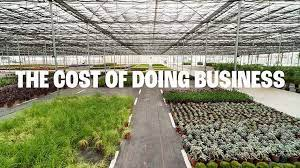Assess the Community Needs.
Some topics to think about when assessing community needs
include the following:
The species the nursery
is capable of growing.
The types of
environments in which plants will be out-planted.
Specific end-user requirements for species (for example, seed source, special properties).
The size and age of
stock preferred.
The season during
which people prefer to plant.
The quantities of species people may plant.
The distance people are willing to travel to obtain the plant materials.
Assess Resources and Costs
Nurseries differ greatly in terms of their financial
objectives.
Whatever the circumstances, finance is a key part of nursery
planning. It determines:
How much money can be invested in the nursery at the outset?
The labour force that can be hired.
In what timeframe the nursery can start to produce plants
for sale?
How many plants can be produced?
What price can be charged for the plant materials?
Think before you start the nursery:
What are the truly needed and wanted plants for your immediate customers?
Who are the potential clients of our plant materials at this time?
Who might be potential clients in the future?
What are the needs and priorities of the potential clients?
Even if plants are to be distributed freely and not sold, it
is still essential to know the cost
to produce each kind of plant. Knowing production costs is
crucial for planning,
assessing feasibility, and ensuring the financial viability of the nursery.
Will the nursery be able to meet its production expenses?
Is the price the
nursery will need to charge for
plant materials a cost that the market can bear?
For a new nursery,
predicting the cost of plants is complicated; predicting costs depends
a great deal on infrastructure, nursery size, staff skills,
knowledge base, and many other
factors.
A small-scale pilot nursery can help accurately assess:
What infrastructure is truly necessary for production? (for example, perhaps a big greenhouse isn’t needed at all).
Which container types
and propagation strategies are optimal for the plants?
How to take crops through all phases of development, from germination through storage and distribution?
What labor and material costs are involved?
How do clients respond
to the plants produced?
How to develop realistic timelines and budgets for future
production?
What aspects of the nursery vision are feasible to carry out
at this time?

